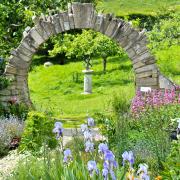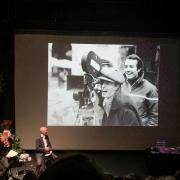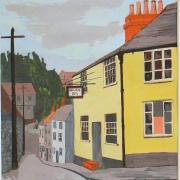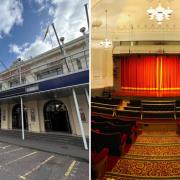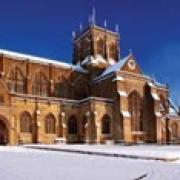At Cranborne Chase AONB Dark Skies Festival, StarFest, you can explore the celestial treasures of Dorset’s first Dark Sky Reserve both in person and online. Dorset astronomer Bob Mizon, explains why this area of the county is such a special place for stargazing and some of the events that are planned for this February's StarFest
Many of us have experienced the pristine night skies over the Cranborne Chase Area of Outstanding Natural Beauty (AONB), an expanse of nearly 1000 square kilometres, big enough to be in four counties (Dorset, Hampshire, Wiltshire and Somerset). The rolling landscape, riven by chalk streams and dotted with woodlands, is beautiful by day and by night.
Click here for February's stargazing highlights
As dusk deepens, the Milky Way, our own galaxy seen from our vantage point within it, the tracery of the constellations and deep-sky objects such as the Andromeda galaxy, impossible to see in urban areas, are on show. There are many places in the heart of this AONB where the casual observer can park off the road and see a better night sky than can be experienced anywhere else in south central England.

Cranborne Chase AONB was formally awarded the status of an International Dark Sky Reserve (IDSR) on October 18, 2019, the 14th such Reserve in the world within the scheme run by the International Dark-Sky Association. On light-pollution maps this stands out as an island of darkness in south central England. On the website nightblight.cpre.org.uk/maps you will notice, in the south-western region, a dark area between the light-pollution signatures of Salisbury, Blandford and Warminster - this is Cranborne Chase AONB.

The Dark Sky Reserve designation is only awarded to areas which undertake to protect and improve their exceptional starry skies for both residents and present and future visitors. Local councils and planners, as well as schools, businesses and environmental groups were actively engaged in seminars and training sessions about the benefits of protecting starry skies and the control of light pollution. Members of the Wimborne-based Wessex Astronomical Society and the Dorset branch of the Commission for Dark Skies, a section of the British Astronomical Association, have systematically taken hundreds of measurements of the darkness of the AONB’s night skies, confirming the superb quality of its starscapes. By ensuring that its special character will not be spoilt by sky glow or intrusive light, the AONB is playing its part in the lengthy task of regaining the wonders of the universe for the UK. Find out more about how they did this at chasingstars.org.uk.

The beautiful night sky views from Cranborne Chase AONB's Dark Sky Reserve will be celebrated this year from February 21 – 26 during its annual Dark Skies Festival. The AONB ‘StarFest’ offers lots of great events for all ages and levels of interest, the majority of these are online this year, so you can take part wherever you are. There are talks by expert astronomers on stargazing and the wonders of the near and far universe, and workshops for youngsters such as the Dark Sky Rangers event led by Space Ambassador Jo Richardson, where children can join ‘In the Night Sky Live’ with Space Detectives. There’s a practical stargazing session (weather permitting) with local astronomers, and Star Walk Stories from one of Dorset's best storytellers, Lizzie Bryant.
Most events are bookable on Zoom so a heavenly time should be had by all. Head to the Cranborne Chase AONB Dark Sky Events website for more details of how to be part of this star-studded event and to book your place cranbornechase.org.uk/events.

Some online StarFest highlights
February 21: Introduction to Stargazing Astronomer and Cranborne Chase AONB Dark Skies Advisor Steve Tonkin, covers how to use a Stellarium (app) and how to use a simple Planisphre to understand the night sky. Starts 7.30pm
February 22: Constellation Sketching and Milky Way Model-Making Ideal for half-term, join astronomer Mary McIntyre for an hour of celestial arts and crafts at 4pm.
February 22: Introduction to Astrophotography with DSLRs and Telescopes Join astronomer and astro-photographer, Mary McIntyre to learn more about the tricks of the trade and how you can take better photos. No previous experience required. Starts 7.30pm
February 25: Deep Sky Observing for Absolute Beginners Astronomer Steve Tonkin reveals the a wealth of celestial treasures, many of which are within reach of simple observing kit. Using hand-held binoculars, see regions of the sky where stars are born, stars of different colours and even distant galaxies. Starts 7.30pm
February 26: Star Walk Stories Dorset-based storyteller Lizzie Bryant explores the myths and legends of the stars and constellations to be found in the February night sky. Suitable for 7+/adults Starts 7.30pm
All these events, and others, are online and bookable at cranbornechase.org.uk/events











